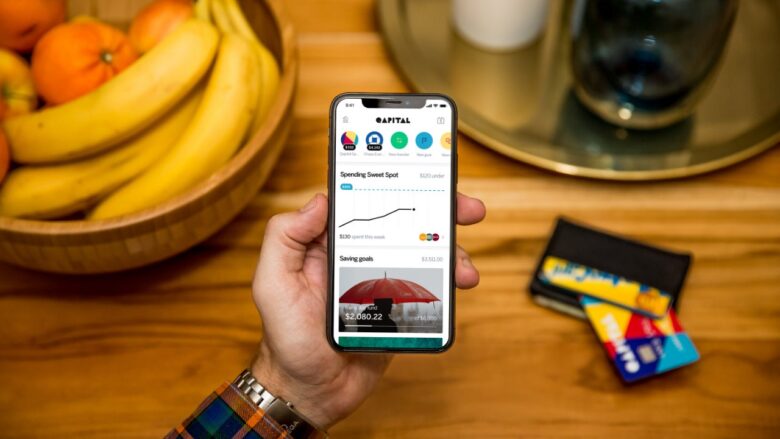Introduction to the Evolving Landscape of Personal Finance
The way we manage money is evolving faster than ever. As technology continues to simplify our lives, personal finance has received a digital makeover, giving us access to tools that were unimaginable just a few years ago. From managing budgets to investing small amounts of money, the rise of specialized money-saving apps has been a game changer. These apps cater to a variety of financial goals, including debt reduction, rainy-day savings, and mastering spending habits. If you’re aiming to take financial control in 2025, this guide to the top 10 money-saving apps will help pave the way.
Budgeting Apps: Taking Control of Your Finances
Budgeting apps are no longer just digital spreadsheets. Today’s apps, like Mint and YNAB (You Need a Budget), are intuitive, time-efficient, and actionable. They automatically categorize your expenses, set savings goals, and even display visual charts to give you a clear picture of your financial health. Many of them are also linked directly to your bank accounts, enabling real-time updates on your expenditure. These apps are a crucial first step if you want to understand where your money goes and create a sustainable plan to achieve your financial goals.
Investment Apps: Making Your Money Work for You
Gone are the days when investing was reserved for Wall Street professionals. Investment apps such as Acorns, Robinhood, and Betterment have made it accessible and user-friendly. These platforms guide you through investing in stocks, ETFs, or even cryptocurrency with minimal effort. Whether you want to invest spare change or grow a diversified portfolio, these apps lower the barrier to entry by offering no-minimum deposits, robo-advisor options, and educational modules. The best part? Watching your money grow can become as easy as setting up a recurring transfer every payday.
Coupon and Cashback Apps: Smart Shopping Strategies
Why pay full price when you can save with a few simple taps? Apps such as Rakuten, Honey, and Ibotta, which offer coupons and cashback, enable you to save more money during your online or in-store shopping. By automatically tracking discounts, scanning for promo codes, or providing cashback rewards on purchases, these apps maximize every dollar you spend. Whether it’s groceries, clothing, or electronics, these tools are a smart shopper’s best-kept secret for spending less while getting more.
Bill Negotiation Apps: Lowering Your Monthly Expenses
Tired of overpaying for internet, cable, or insurance? Bill negotiation apps like Trim and Rocket Money (formerly Truebill) can save you hundreds of dollars a year by negotiating better rates on your behalf. These apps connect to your accounts, analyze recurring bills, and take action—reaching out to service providers to lower costs or find promotional rates. Some apps even go to great lengths to cancel subscriptions you’re no longer using, ensuring you only pay for services you truly enjoy.
Subscription Management Apps: Cutting Unnecessary Costs
Our lives are filled with subscriptions, ranging from Netflix to gym memberships, which often go unnoticed. Subscription management apps, such as Subby or Rocket Money, help you track all recurring charges in one place. By providing a consolidated view of your monthly subscriptions, these apps show you exactly what you’re paying for. If you spot something redundant or unused, canceling is usually just one tap away. This leads to significant savings over time while helping you spend on what truly matters.
Financial Education Apps: Enhancing Your Money Knowledge
Being savvy about personal finance goes beyond saving a few dollars—it requires learning the logic behind smart financial decisions. Apps like NerdWallet and Wealthfront educate users through bite-sized lessons, budgeting tutorials, and guides about investing or managing taxes. Even better, many offer quizzes and progress tracking for those serious about improving their financial literacy. The more you know, the better equipped you’ll be to make informed decisions and avoid common money pitfalls.
Expense Tracking Apps: Monitoring Your Spending Habits
Tracking every dollar spent might seem tedious, but expense-tracking apps make the process seamless while giving you valuable insights into your habits. Apps like PocketGuard and Goodbudget sync with your accounts to show where your money is going—right down to individual purchases. This empowers you to adjust unnecessary expenses, identify patterns, and allocate funds more effectively. When combined with clear-cut savings goals, these apps play a pivotal role in achieving financial discipline.
Debt Management Apps: Strategies for Becoming Debt-Free
Struggling to tackle loans, credit card debt, or student bills? Debt management apps like Tally and Debt Payoff Planner are here to help. These tools use strategies like the snowball or avalanche method to guide you in paying off your debts faster while avoiding hefty interest charges. By consolidating payment schedules and showing your progress along the way, these apps help make the daunting task of becoming debt-free feel achievable.
Future Trends in Money-Saving Apps and What’s Next
The money-saving app landscape is far from static. Looking ahead, expect to see more personalized AI-based recommendations, broader financial integrations, and tools designed to adapt to your evolving life goals. Many of these apps will likely integrate environmental and ethical considerations, allowing users to save while making socially responsible decisions.
When it comes to financial health, being proactive is key. Choosing the right mix of apps tailored to your needs will set you up for success. Whether your goal is saving, investing, or debt elimination, there’s no shortage of tools at your disposal. Start by exploring one app at a time, and commit to taking small, ongoing steps toward a secure financial future. Your future self will thank you for it.



